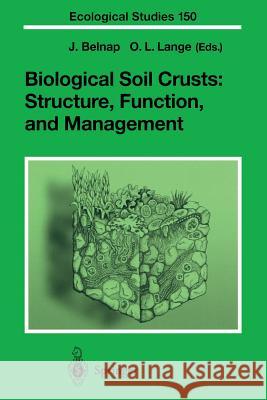Biological Soil Crusts: Structure, Function, and Management » książka
Biological Soil Crusts: Structure, Function, and Management
ISBN-13: 9783540437574 / Angielski / Miękka / 2002 / 506 str.
In arid and semiarid lands throughout the world, where the cover of vegetation is sparse or absent, the open spaces between the higher plants are generally not bare of autotrophic life, but covered by a community of highly specialized organisms. This soil-surface community consists of cyanob- teria, algae, lichens, mosses, microfungi, and other bacteria in differing proportions. Cyanobacterial and microfungal filaments, rhizinae and rhi- morphs of lichens, and the rhizinae and protonemata of bryophytes weave throughout the top few millimeters of soil, gluing loose soil particles together. This forms a crust up to a few centimeters thick that stabilizes and protects soil surfaces from erosive forces (Cameron and Blank 1966; Friedmann and Galun 1974; Belnap and Gardner 1993).These crusts occur in all hot, cool, and cold-arid and semiarid regions of the world, and may constitute up to or more than 70% of the living cover. Biological soil crusts have only recently been recognized as having a major influence on terrestrial ecosystems.











